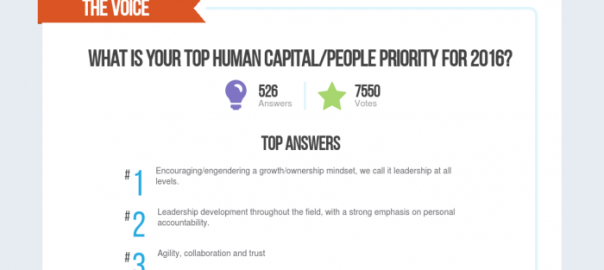Thanks to social media and new technology, most interactions between brands and potential customers now take place in real-time. Internally, however, interactions with employees are still typically conducted slowly via annual performance reviews or employee surveys. Even organizations that really care about personal development typically run a 360-degree feedback process only every 3-5 years. How committed to personal development can an organization be if they only focus on it every 5 years? There is a massive disconnect occurring in which most businesses receive feedback from customers and clients literally every minute of every day, whereas providing and receiving feedback from employees happens annually, or even more infrequently.
Waggl recently used its platform to ask 500,000 business leaders, HR leaders and consultants whether they believe listening to their employees and incorporating their ideas is critical to an organization’s success. The response was overwhelmingly positive, with 97 % of participants answering YES. When asked whether hearing from employees once a year via annual survey gives organizations the timely insights they need to be successful, only 38% of respondents from North America felt an annual survey was sufficient.
Most business and HR leaders agree that traditional methods of listening to and engaging with employees, while full of positive intent, have had little impact on driving business health, let alone business strategy. Yet, despite this shift in attitude, most organizations are still relying primarily on the annual survey to communicate with employees.
What kinds of insights could business leaders derive if they communicated with employees more frequently? As an example, let’s look at a rapidly growing technology company with a reputation for having a winning culture. The executive management team at this company is well-aligned around the cultural values, and feels strongly about culture as a key differentiator in attracting and retaining top talent. But when the company recently used an anonymous pulse survey to ask employees if they would recommend the company as a place to work, they were surprised to learn that 11% would not. Still more felt that they would recommend the company as a place to work at the time of the pulse survey, but had some growing concerns about it in the coming year.
But the most valuable insight came from the open-ended questions they posed to employees about why employees wouldn’t recommend the company and what should be done to correct the issue. The key take-away was that employees felt management needed to inspire more confidence, and reassure everyone that the business was viable and stable by sharing more insight about its strategy and vision. Employees suggested that executive management start sharing more information about the company’s successes, investor support, industry excitement and customer wins. They also suggested that the marketing department share daily content with the employee base to retweet, thereby enlisting them as brand ambassadors.
Because the executive team at this particular company had the courage and the level of commitment required to solicit and receive transparent feedback, they gained valuable insight about the perspective of the employee base, and were able to take steps to correct perception and strengthen the culture.
As one CEO said, “Treat employees like they can make a difference and they will.”![The Importance of Developing a People Strategy that Supports Your Business Strategy [Infographic]](https://www.onlinesalesguidetip.com/wp-content/uploads/2016/07/The-Importance-of-Developing-a-People-Strategy-that-Supports-Your-Business-Strategy-Infographic.png)
(28)







